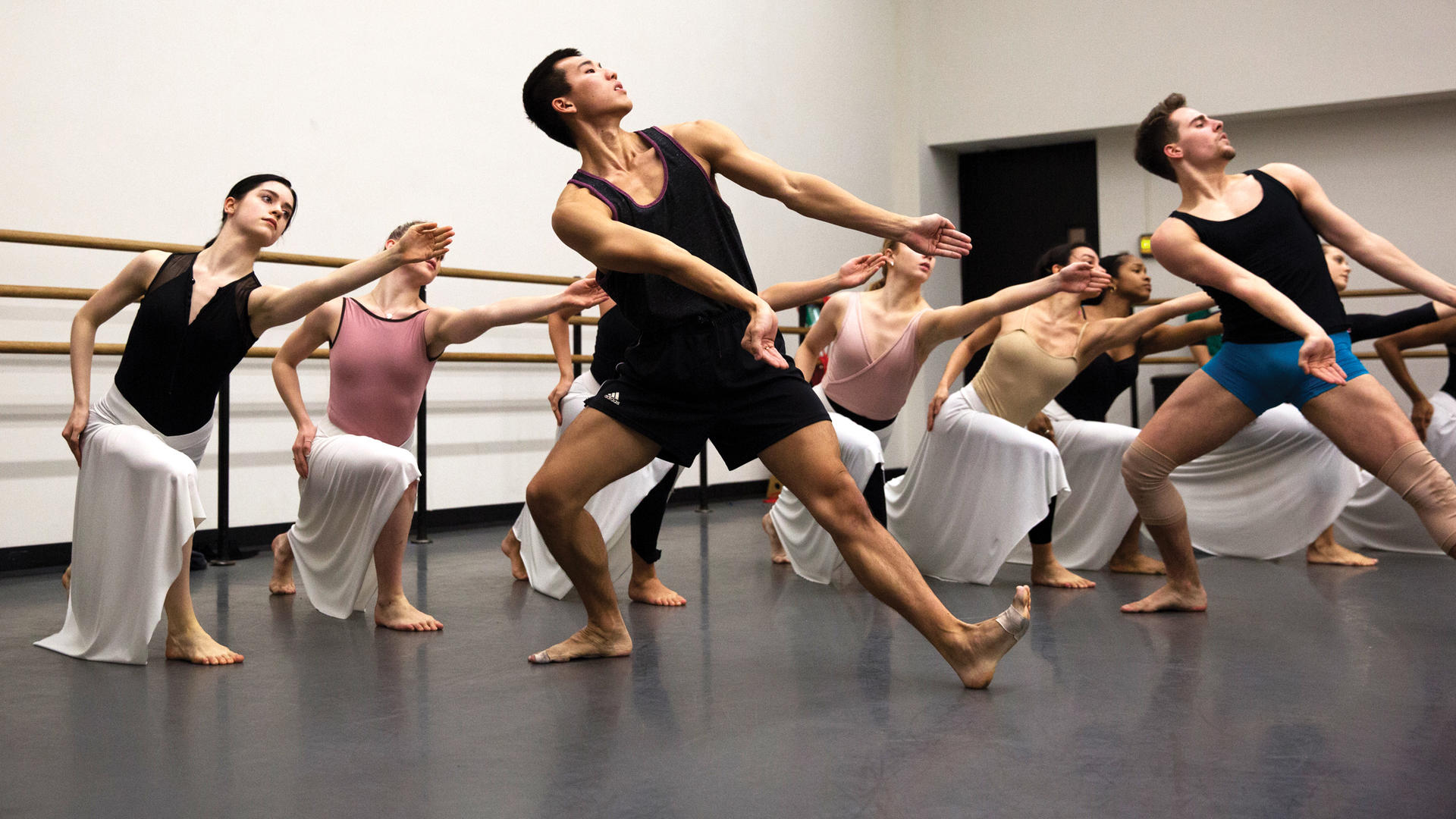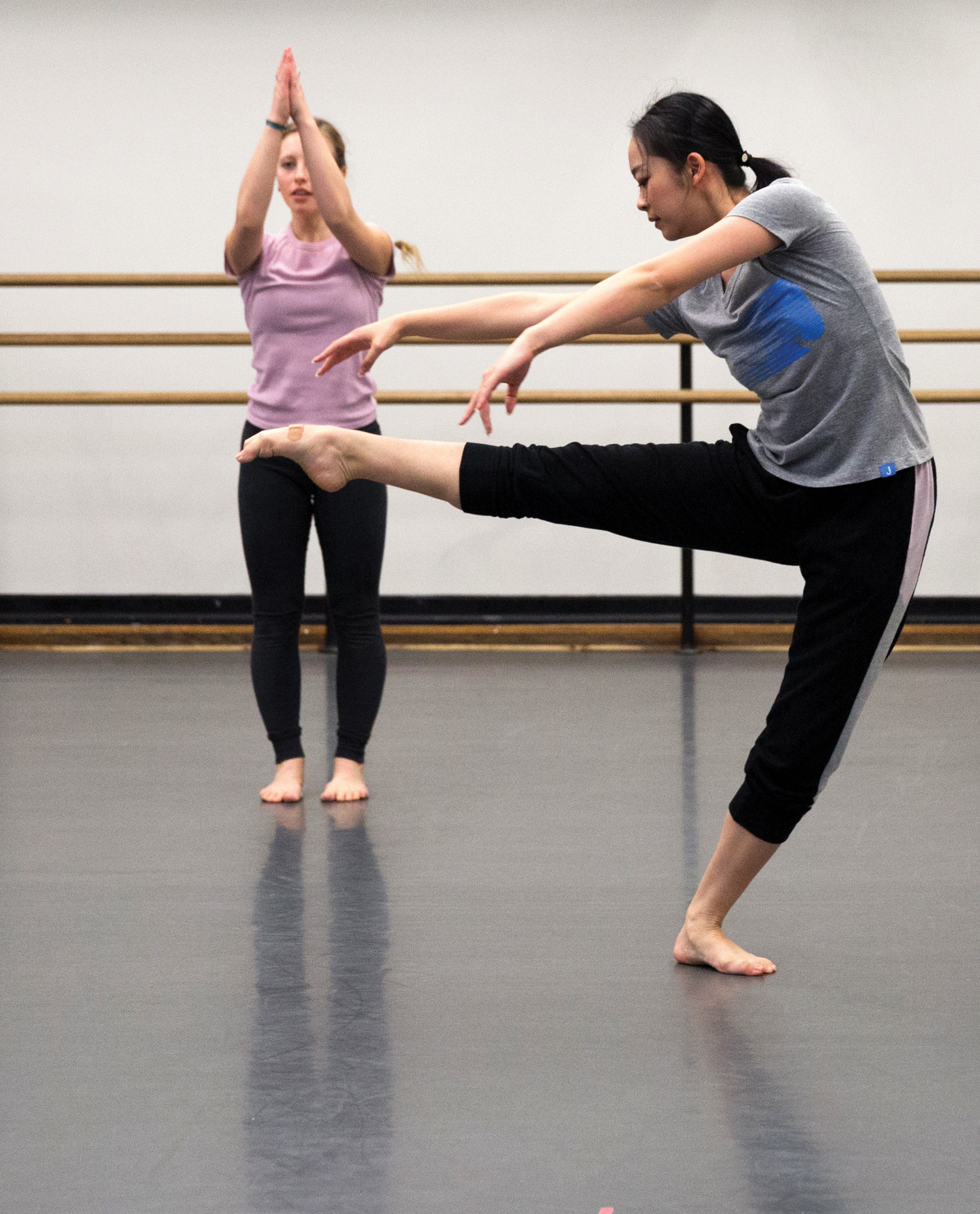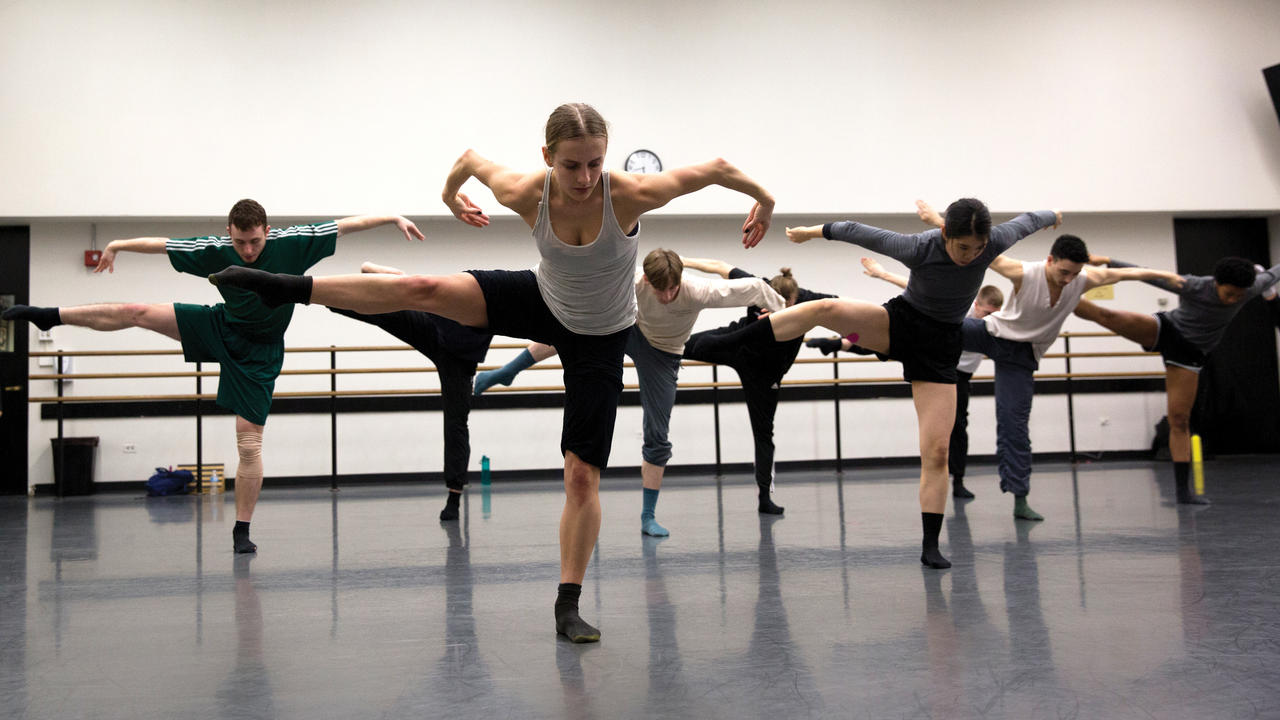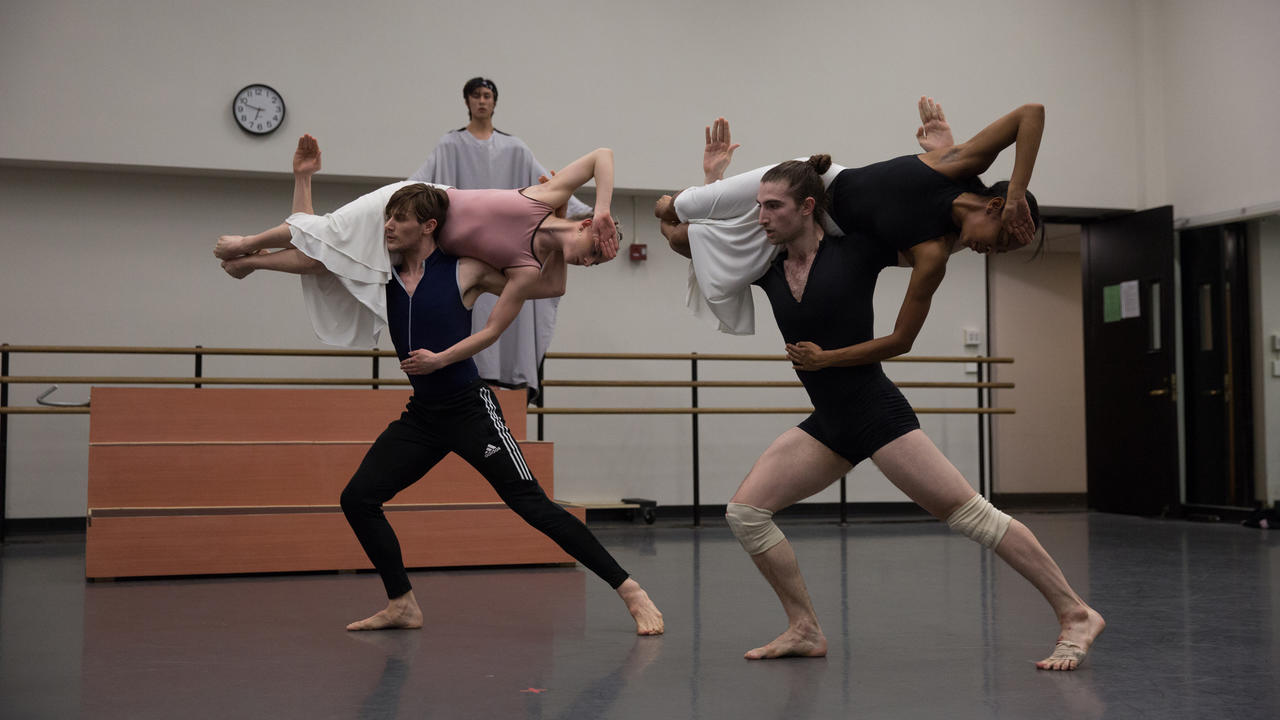
Spring Dances features repertory works by Alejandro Cerrudo, Bill T. Jones and Martha Graham
Each spring’s repertory program presents a wealth of opportunities and challenges for Juilliard dancers. This year’s program is also a particularly historic one.

It starts with Little mortal jump, choreographer Alejandro Cerrudo’s Juilliard debut. Set to music by, among others, the band Beirut, Philip Glass (Diploma ’60, MS ’62, composition), and Tom Waits, it is being staged by Pablo Piantino (BFA ’99, dance) with rehearsal assistant Taryn Kaschock Russell, associate director of the Dance Division. D-Man in the Waters (Part I) is next on the program, and it's the Spring Dances debut of choreographer Bill T. Jones. “D-Man” refers to Jones’ nickname for Demian Acquavella, who had joined the Bill T. Jones/Arnie Zane dance company in 1985, two years before learning he was HIV-positive. The work, a celebration of Acquavella’s determination to fight his illness, is set to Mendelssohn’s Octet in E-flat Major for Strings, Op. 20, which will be performed by Juilliard musicians. It’s staged by Antonio Brown (BFA ’07, dance) and I-Ling Liu.

The program culminates with Martha Graham’s monumental The Rite of Spring, set to Stravinsky’s groundbreaking score, which will be performed by the Juilliard Orchestra conducted by Jeffrey Milarsky (BM ’88, MM ’90, percussion). Graham danced the role of The Chosen One in the 1930 U.S. premiere of the ballet—a version choreographed by Léonide Massine. More than half a century later, in 1984, a new version, choreographed by the 90-year-old Graham, premiered at Lincoln Center’s New York State Theater. In her rave New York Times review, Anna Kisselgoff noted that in Graham’s “evocation of seemingly remote climes and cultures, she can make us recognize universal emotions.” The dancer who premiered the role of The Chosen One in that production was Terese Capucilli, a member of Graham’s company who would join the Juilliard faculty in 1999. The other Chosen One in the double-cast production was Christine Dakin. This Juilliard production will be the first time the work has been danced in its entirety by a conservatory. And it’s being staged by Capucilli, with help from Dakin and three other current and former Graham company members—Capucilli calculates that they have 82 years of Graham experience among them.
These are all amazing links to Graham, one of history’s leading exponents of modern dance, not to mention one of the inaugural Juilliard dance faculty members. Graham taught here from 1951 to 1977; the dance students all take Graham Technique—from Capucilli—in their first and second years. Another historical aspect of this production is that this is the youngest group of dancers to ever perform it. Third-year student Noah Wang, one of the dancers to have the role of the Shaman (the work is double-cast), wrote about the intense and heady experience of learning this iconic role over the course of this year. —Susan Jackson

Learning the Role of The Shaman
By Noah Wang
Assuming the role of The Shaman in Martha Graham’s The Rite of Spring is daunting, exhausting, and exhilarating all at once. It is a process that began for me in September, when some of us were invited to audition for the lead roles. Once rehearsals began in October, I remember feeling clouded with self-doubt and uncertainty: How is a student like me supposed to take on such a mature role? How will I build the stamina to perform for 35 minutes straight? Have I bitten off more than I can chew?
Luckily, our Graham Technique teacher, Terese Capucilli, who originated the role of The Chosen One with the Martha Graham Dance Company, is directing and mentoring the cast throughout this process. She always finds the potential in her students, and she works tirelessly to cultivate it over the two years that we study with her. The Rite of Spring gives us the unique opportunity to explore the physical and artistic power of Graham. One of the first things Terese told us was, “There will be no room for insecurities that take you out of the work but only complete absorption into this work, thereby using the multitude of colors that are you.” The more I realized how much she believed and invested in me, the more I began to do the same for myself. By December, the other leads and I had learned most of the piece and were beginning to deepen into the dramatic elements of our characters. As The Shaman, I began to feel more powerful, more grounded, more present as a dancer than I ever had before. I ended the semester feeling tired but fulfilled.
The last week of January marked the beginning of the rehearsal process for the entire cast. Up until this point, I had been working with only my partner, Sarah Pippin (The Chosen One), the other cast leads, and the dancers who are in the roles of the Priests, so it was refreshing to now feel the presence of 34 dancers in the room, all oriented toward a common goal. The energy of this new community is vibrant. The process, fast-paced but meticulous, requires a deep level of attention and sensitivity from everyone. All of Graham’s movement originates in the pelvis and back, from the simplest gestures to the most complex lifts, jumps, and turns. This principle keeps us grounded while we are learning such technically difficult choreography. Then there is also Stravinsky’s score, which is one of the most complex pieces of music that I have ever danced to. We have to count in odd phrases of threes, fives, sevens, and nines (dancers conventionally count in fours or eights). The piece demands everything of our physical, mental, and artistic capacities, but we are more than up for the challenge.
It’s been said that the hardest things to do in dance are to walk and run. This rings especially true for a role like The Shaman, whose choreography is powerful but unembellished. In many crucial moments of the piece, he is simply walking, running, and standing. This can be so challenging because you have no impressive or intricate steps to hide behind; you are left quite vulnerable in front of the audience, and without a strong, authentic dramatic presence, you lose their interest. The Shaman is the conductor of the sacrificial ceremony. It is his duty to guide the audience through a terrifying but invigorating journey. Terese constantly emphasizes how each step into the floor, every piercing focus of the eyes, is essential to building a narrative and creating a sense of place. “The worst thing you can do,” she told us, “is let the audience realize that they are looking at a stage.”
I am really eager to see how all of us assume and reinvent the roles of this Graham repertory staple. We have amazing resources to help us: Terese, current and former Graham company dancers, and old and new video footage of the piece. It has evolved and changed slightly over the years, so Terese is creating a journey through the work that makes the most sense for our cast as a unique group of dancers—we are the youngest cast ever to perform this work as a whole.
Although there is much more work to do, I feel that we are already finding our way into the piece, both physically and dramatically. “The technique is in your bodies already,” Terese reminds us. “You know more than you think you do.” The Rite of Spring is all about ritual and lineage, so to feel the support of the generations of artists before us makes this journey into the unknown that much more exciting.
Third-year dancer Noah Wang holds Rudolf Nureyev and Joseph F. McCrindle scholarships